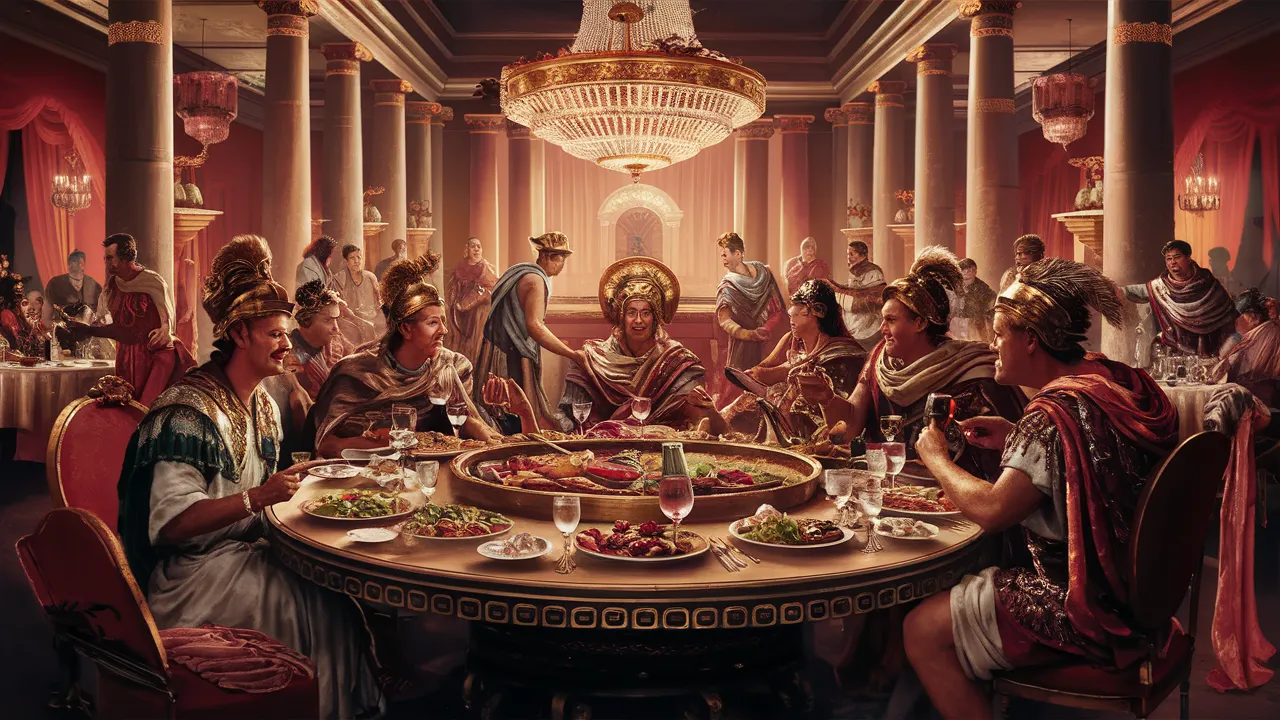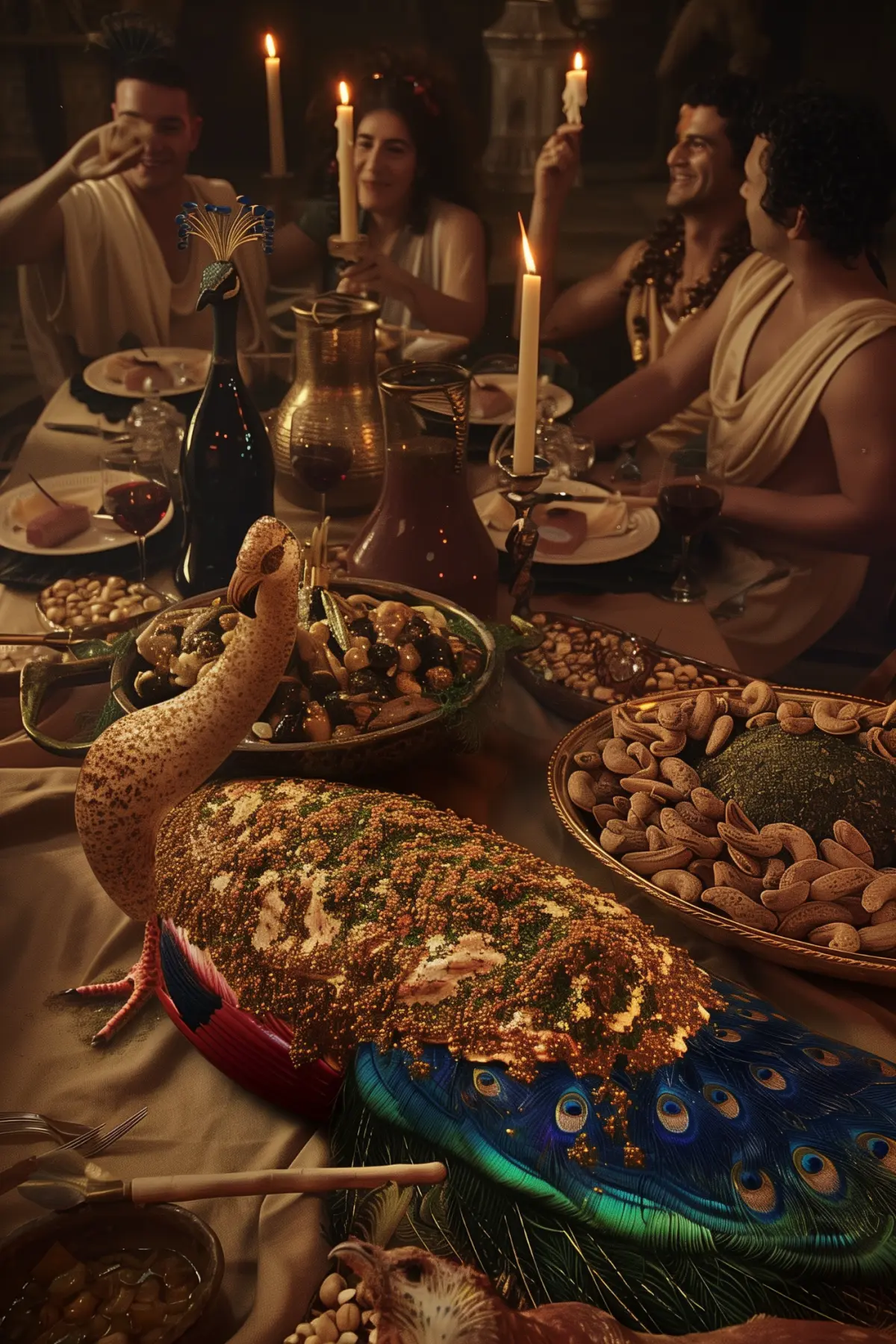Romans Ate Way Stranger Dinners Than You Think

While their lunches were impressive, dinner or cena was truly the pièce de résistance for ancient Romans - a multi-course, indulgent ritual that brought the day's activities to a lavish close. From opulent appetizer spreads to exotic meat mains and decadent desserts, the Roman dinner merged outstanding cuisine with outrageous entertainment. Let's feast our eyes on the mouth-watering dishes dished up for the evening meal.
Gustatio: A Smorgasbord to Start
The appetizer course known as the gustatio whipped up the appetite with a tantalizing variety of small bites. Guests grazed on salted fish, eggs, mushrooms, and bits of meat or fowl. The wealthy indulged in delicacies like pickled fish guts, salted jellyfish, and even roasted parrot!
Elaborate presentations featured whole roasted pigs or wild boars with carved details. The gustatio set an extravagant tone for the feasting to follow.
Mensae Primae: Succulent Centerpieces
For the main course, chefs prepared a dizzying array of meat, seafood, and game dishes. Elaborate roasts made grand centerpieces, from stuffed peacock or flamingo showered with spices to whole tuna baked in aromatic herbs and nuts.
Other favorites included sows' udders stuffed with seafood and trenches, braised ox-tongue with truffles, and roasted ostrich. Even more exotic meats like leopard and parrot graced the tables of the elite patricians.

Seafood Sensations
No Roman feast was complete without a bounty of fresh seafood delicacies. Prized dishes included sea urchins, baby eels dashed with garum sauce, salt-crusted baked fish drizzled with olive oil, and prawns simmered in a cumin-scented broth.
Connoisseurs savored delicacies like parrotfish, rays, and even dolphins! For palatial extravagance, whole salted sea monsters like whale were hauled in.
Porked Perfection
Pigs held an exalted place in Roman cuisine for their versatility. One could find every part of the hog represented, from crispy pork cracklins to succulent boar rump roasts.
Sophisticated palates prized decadent pork dishes like boiled pork shoulder stuffed with miniature sausages, pork tenderloin with pine nut sauce, and pigs' womb stuffed with spiced offal. Pork reigned supreme on aristocratic tabletops.
Class Conundrums
While the elite patricians reveled in lucullan excess, the dishes of the lower classes were far more modest. Peasants, soldiers, artists, and craftsmen dined mainly on a simple puls - a porridge or stew made from grains, beans, and vegetables like cabbage or carrots.
They supplemented this staple with bits of pork, fish, or fowl when possible. Bakers enjoyed the luxury of fresh bread, while grape farmers and orchard workers snacked on fruits, nuts, and cheese between meals. For festive occasions, they might pool resources to roast a suckling pig or bake a dense, sweet bread. But decadent dishes like peacock tongues and gilded truffles remained the indulgent privileges of aristocratic tables.

Mensae Secundae: Decadent Desserts
As if that wasn't enough, Romans devoted an entire dessert course called the mensae secundae to sating their sweet tooths. Delicacies included fritters drizzled with honey and poppy seeds, fruit cakes made with pomegranate and fig, and sweet custards flavored with rose or jasmine.
The showstopper? Conjured cereals - intricately constructed "cereals" made entirely from pastry dough steeped in milk and honey to recreate the shapes of ears of wheat, chickpeas, and more.
Libations and Spectacles
Of course, no Roman banquet was complete without free-flowing wine and entertainment! Wines from celebrated regions were paired to each course, from light Falernian to robust Caecuban reds. Mulsum, a honeyed wine cocktail, offered a sweet sip. But just as important as the cuisine were the circus-like spectacles, from acrobats and dancers to stage plays and gladiator fights - a true assault on the senses!
Whether for a casual family meal or opulent soiree, the Roman dinner was an all-out indulgence for the ages. By filling their tables with an obscene excess of exotic meats, rare delicacies, and theatrical feats, the elite Romans used the cena to flaunt their wealth, power, and hedonistic appetites. When in Rome, feast as the Romans feasted - and then loosen your belt!
